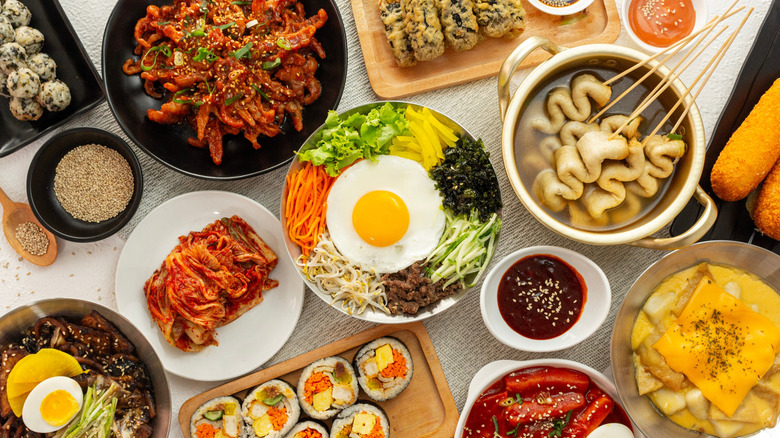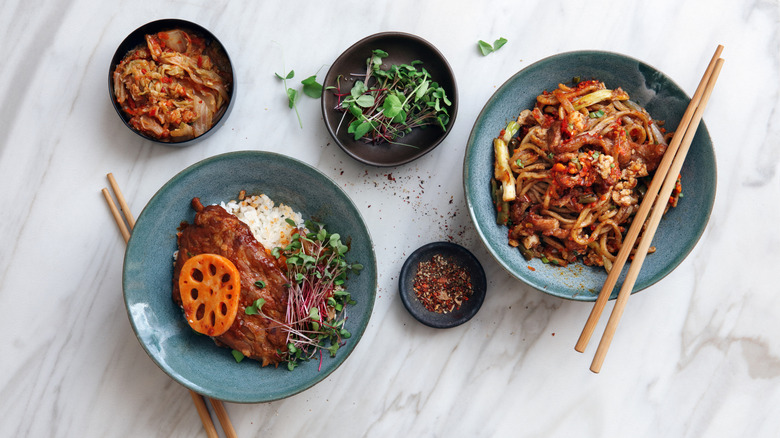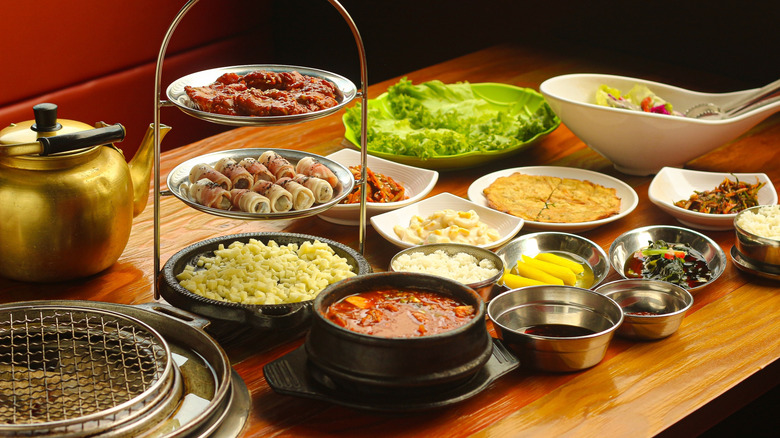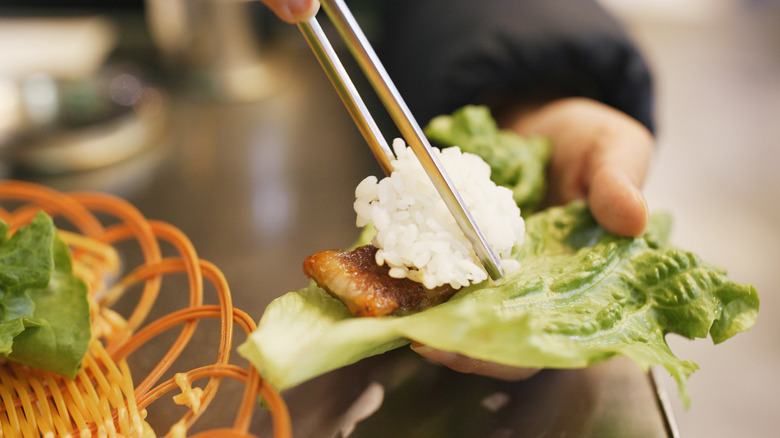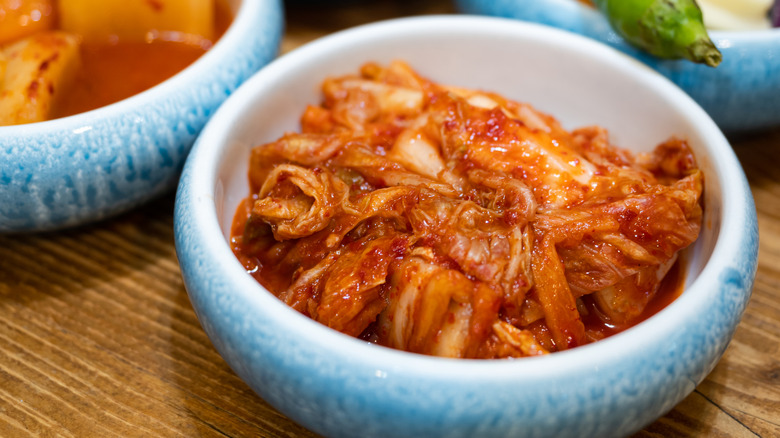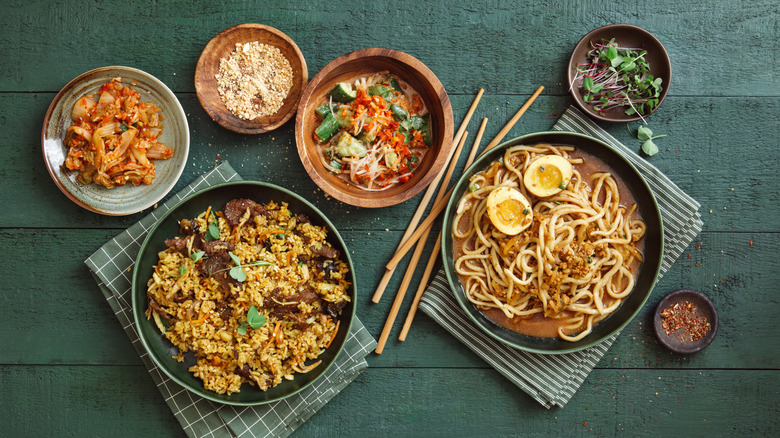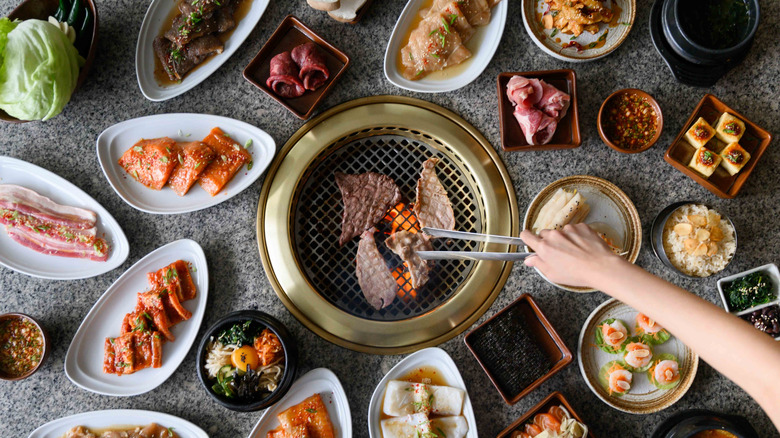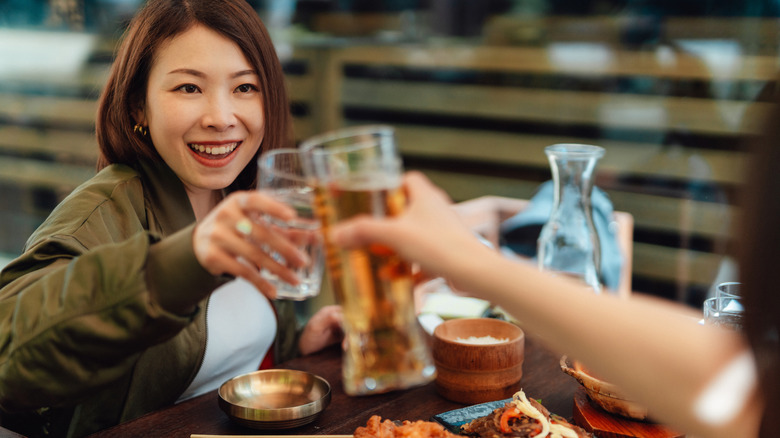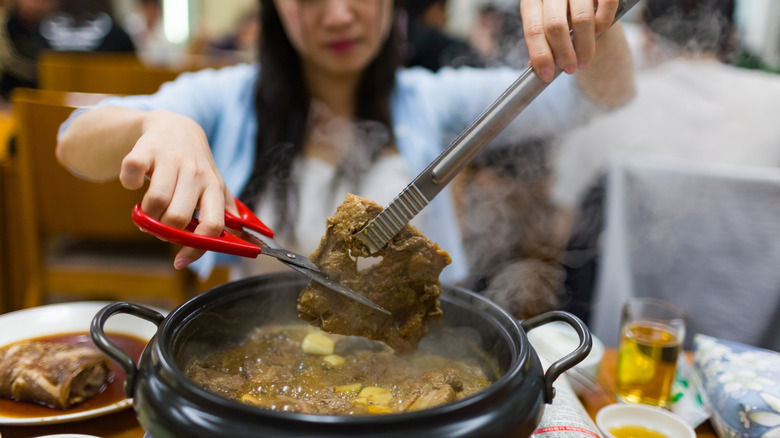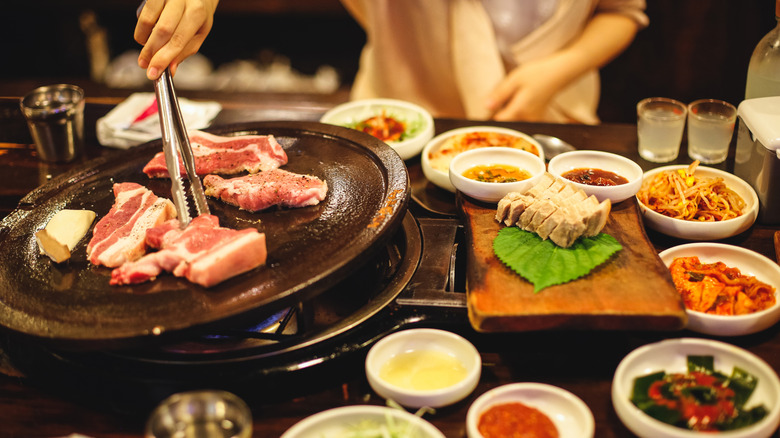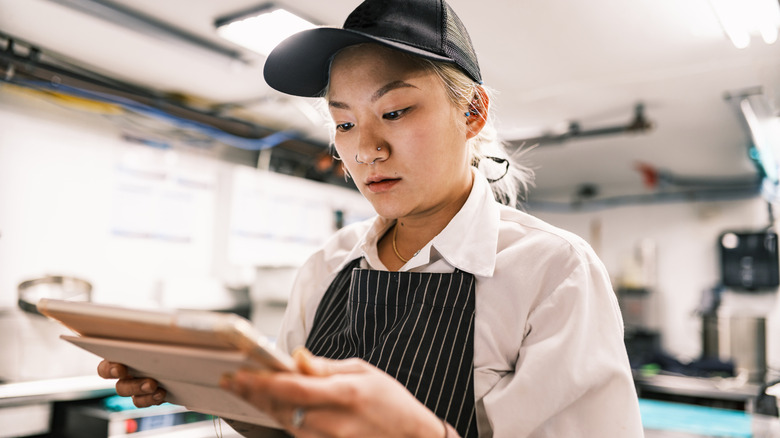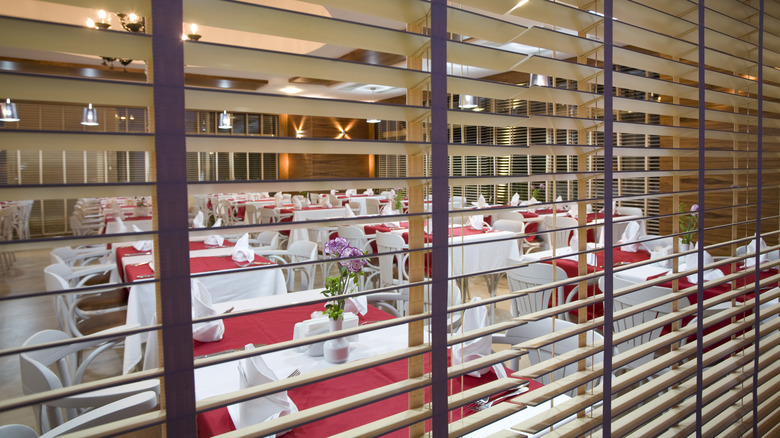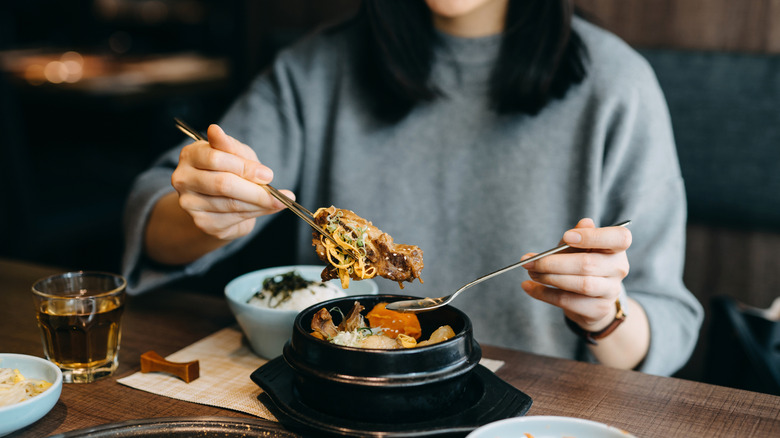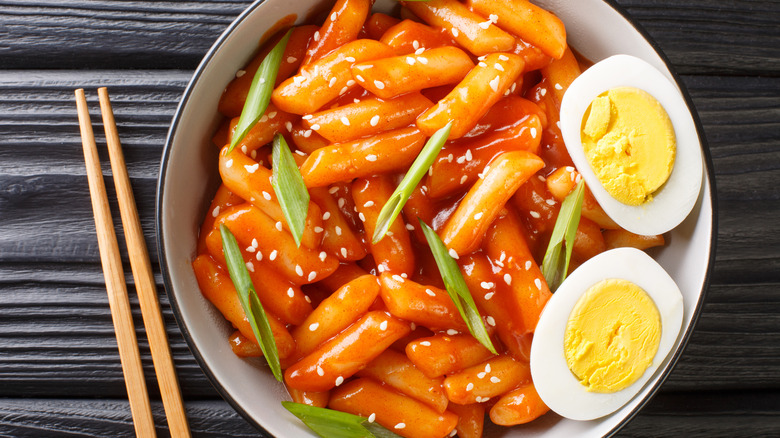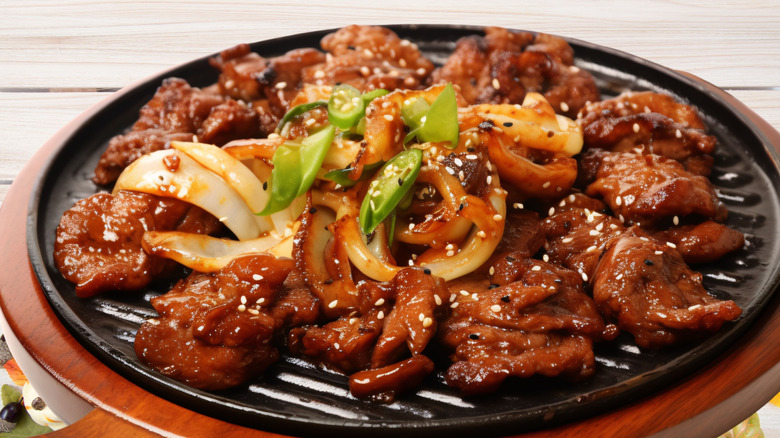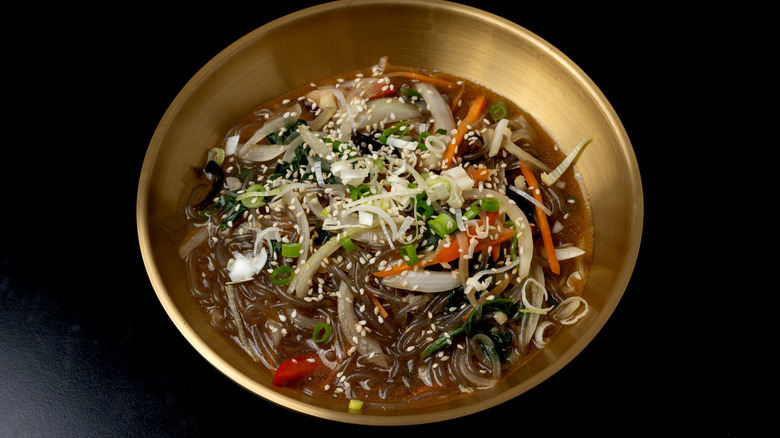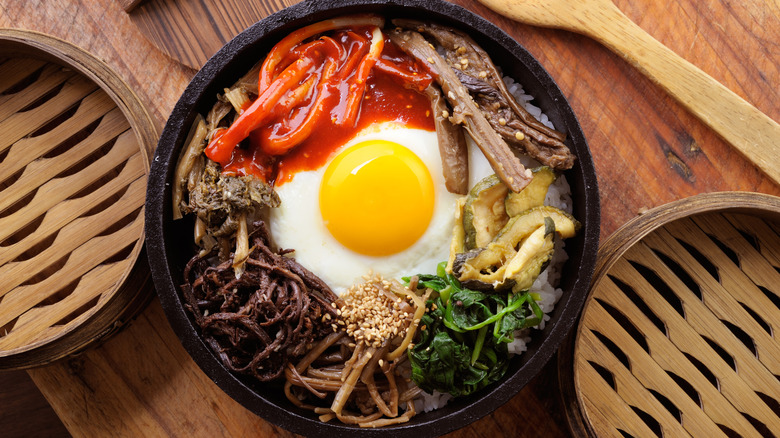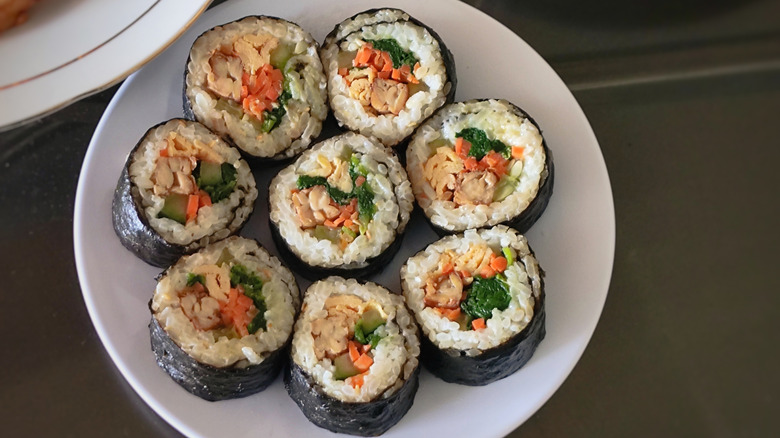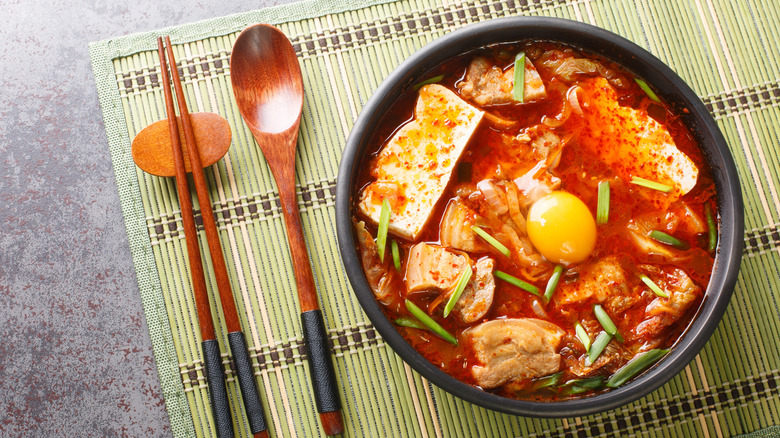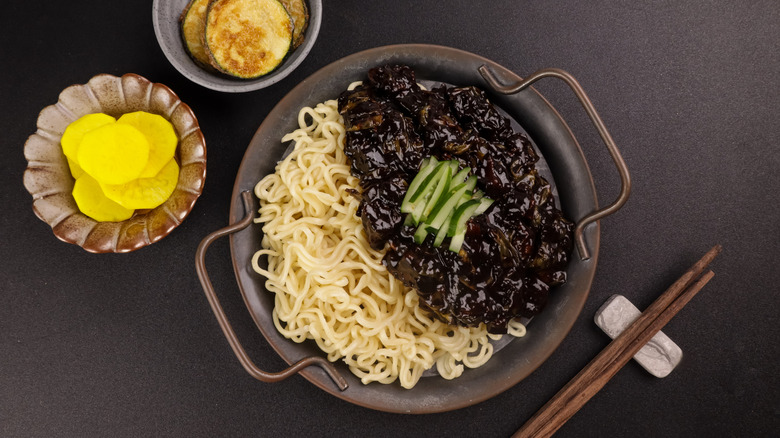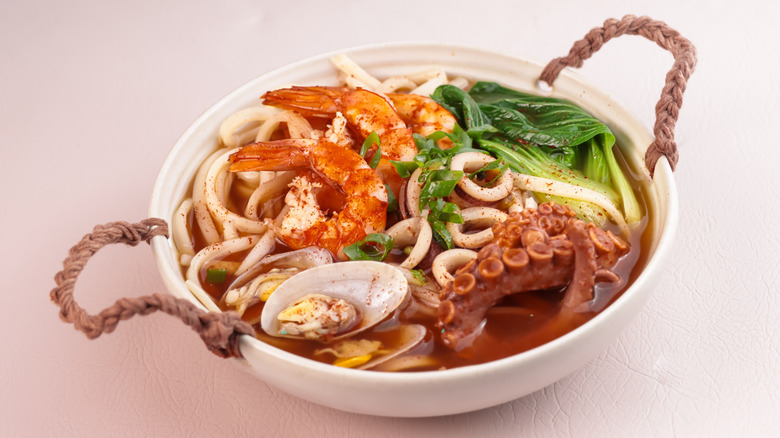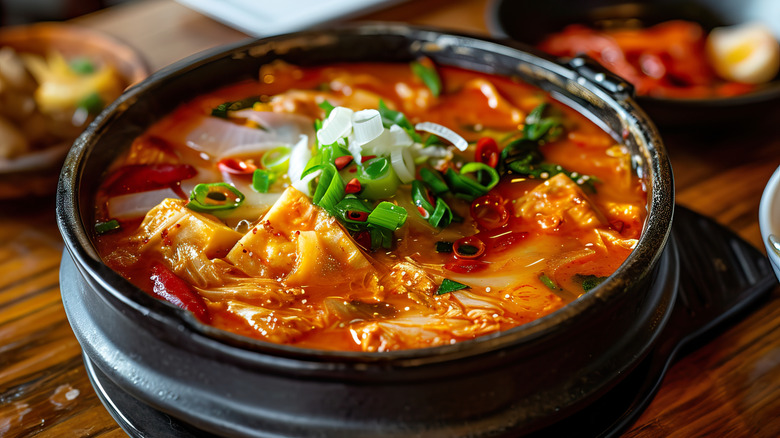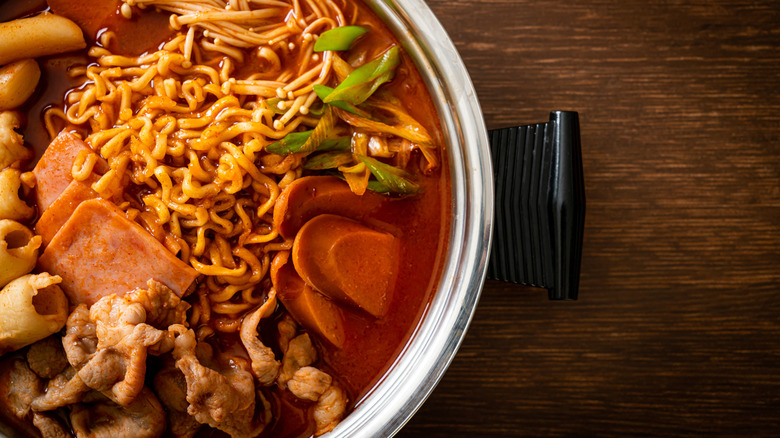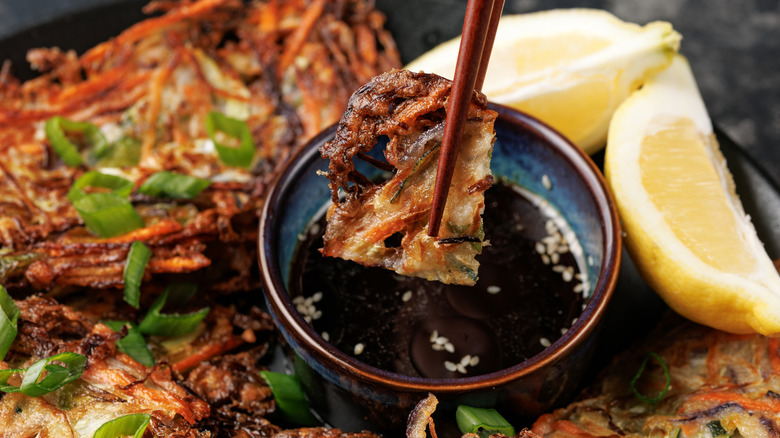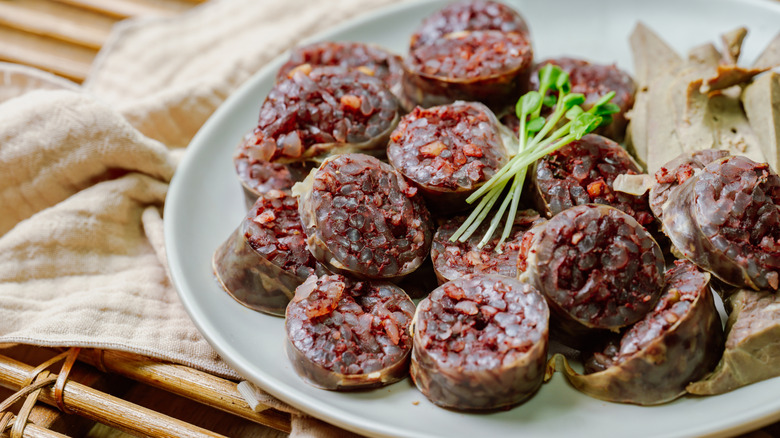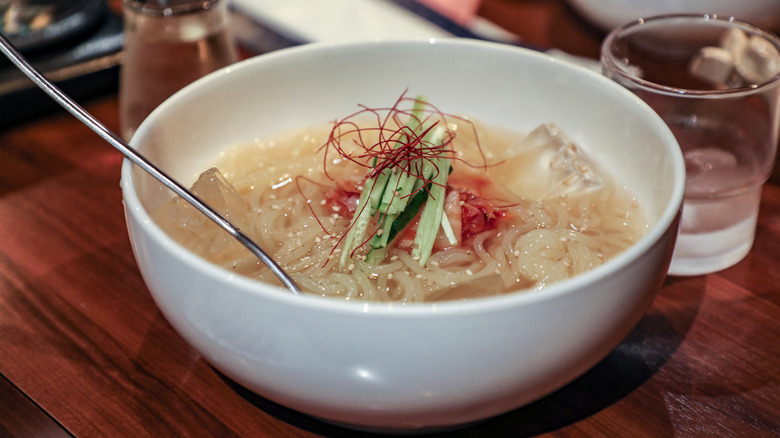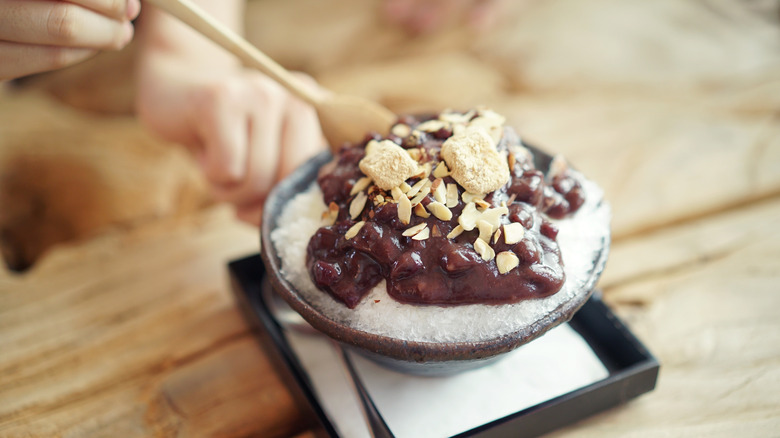Korean Restaurants: What To Expect And What Food To Order
These days, Korean food is pretty much everywhere. But it still surprises me how many of my acquaintances have admitted they don't visit Korean restaurants because they're afraid they'll look like they don't know what they're doing.
But that's no reason not to go. The easiest solution is to bring someone who's had plenty of Korean food, preferably one who speaks conversational Korean (my Korean is terrible, but it's enough to get by). Otherwise, I've got your back, from the basics down to a few nuances.
What if I can't use chopsticks?
You have no idea how many times I've gotten this question. Don't worry if you can't use chopsticks. Seriously. You can ask for a fork.
What is banchan?
Before your main dish comes out, you'll automatically receive tiny bowls of sides delivered to your table. This is banchan. Depending on the restaurant, the amount of banchan you'll get varies, but you can expect four to five bowls, if not a dozen or more.
Banchan isn't meant to be an appetizer, though most people graze a little before the rest of the food is delivered to the table. Try to save at least some of it to eat when the rice hits the table. You can always ask for more. They're free.
Expect to have a vegetable-heavy assortment of sides along with seafood dishes. Vegetables are usually cooked, fermented, marinated, or pickled. Most people unfamiliar with Korean food assume much of it is spicy, but the truth is, a lot of banchan is pretty mild.
Use raw vegetables to make small wraps
Some banchan you'll see consists of raw vegetables, like lettuce, perilla leaves (a cousin of mint), and a salad of thinly sliced green onions. These aren't meant just to be eaten by themselves, like regular prepared banchan. Leafy greens are meant for wrapping up rice, a bit of meat if you want, and then you dress your little wrap with doenjang (fermented bean paste), gochujang (that sweet-and-spicy fermented red pepper condiment everyone is always talking about), or ssamjang (sort of a combo of both).
I know it's tempting to make a huge wrap, but just make a little bundle that you can pop in your mouth all at once. It's not supposed to be a burrito.
What is kimchi and what does it taste like?
Kimchi falls under the overall category of banchan, but it's easily the most important dish in Korea and most abused ingredient on Asian fusion menus. When it comes to kimchi, we don't mess around. My parents have always said that if kimchi isn't served with your rice, it's not a complete meal.
The version most people are used to is the Napa cabbage version — red, fermented, funky, and spicy. One common complaint about kimchi is its smell. And yes, I'll straight up say it, kimchi can smell like farts. The distinct aroma comes from fish sauce in tandem with tiny salted shrimp, and the fact that it's fermented. Dig in, and bam! Straight to Flavortown. It'll be complex: salty, a bit sweet, with some kick. I'm obligated to use the word umami here or I will be banned from writing about food forever.
Like banchan, kimchi comes in a mind-boggling number of variations. Cucumbers, radishes, radish tops, the list is endless. The one ingredient you won't see is meat (unless you count seafood). A common misconception is that it's always supposed to be spicy, but that's actually not true. There are crisp white kimchi variations that have no heat whatsoever.
Are there vegetarian or vegan options at Korean restaurants?
Since most people immediately think of meat-centric Korean barbecue when it comes to Korean food, it surprises a lot of people that much of Korean food is vegetarian-friendly. In a lot of cases, it's vegan-friendly too.
There is a big catch: a lot of banchan contains seafood. In some cases, it's visible, like in dishes such as stir-fried dried anchovies, but a lot of the time, the addition of seafood isn't nearly as obvious. Often it'll be through ingredients such as fish sauce, shrimp paste, or soup base made from dried fish. And unfortunately, if you're at a mom-and-pop restaurant where most the employees don't speak much English, it's gonna be tough for you.
Is Korean food gluten-free?
A fair amount of Korean food is friendly to those who abide by gluten-free diets. Wheat flour isn't a hugely important ingredient in most Korean dishes, but don't take that as a guarantee. If you can tolerate a bit of gluten, you should mostly be okay, but it's a safer bet to avoid noodles, dumplings, pancakes, and baked goods.
Is there any etiquette I should know about?
Here in America, the formal rules aren't too important, but here are a couple general guidelines that'll help.
Your rice bowl should remain on the table during the meal. And when you're done using your utensils, they go right back on the table. Don't pile the sides on top of your rice, take as much as you plan to eat in one bite, and don't get other bits of food into banchan bowls. Basically, don't be gross, since you're sharing everything.
Get used to reaching across the table. You'll be picking from dishes through the whole meal. If the table's big and you can't reach what you want, have someone pass it over.
If you're drinking booze, you're not supposed to pour your own drink. Your neighbor is obligated to fill your glass when it's empty. I'm going to say something mildly controversial — I think it's fine to pour for yourself. You're the one who's drinking, you know your limits. It's way too easy to get messed up when your glass is constantly full.
Why are there scissors at Korean restaurants?
Scissors are commonly used at home and at restaurants to cut up food into more manageable pieces. Since Korean food is generally eaten one mouthful at a time, small pieces of food are ideal. You can use scissors with just about anything — savory pancakes, noodles, meat, kimchi.
Why is my server cooking my barbecue for me?
If you're having Korean barbecue, your server might hover — with aforementioned scissors in hand — while your meat is cooking, or even cook it for you. Despite what you might think of your own grilling skills, they just want to make sure you don't mess it up. To me, it's always felt motherly and fussy in an affectionate way.
Why service is so curt
Every now and then you'll be led to your table by a grumpy-looking host who'll just slap the menus on the table and walk off. Or you'll get servers who look and act like they just don't care about you. They probably don't care, but don't feel too insulted. It's a cultural thing. You'll typically see this with older folks. Don't bother trying to win their affection.
I asked my mom why. She said: "The younger generation is much different. But for older people, no such thing as a smile. Haven't you seen your grandfather's photo? We didn't say cheese when taking pictures. That's just how it was." There you have it.
Plus, tipping isn't a thing in Korea, so servers generally don't have an incentive to be super-attentive or polite. Wave your server down if you need something even if they look annoyed.
Why is Korean dining so private?
This is a subtle nuance, but you might have noticed that a restaurant's outer windows are usually blacked out or that giant blinds are drawn over them, and that all the booths in the place are contained within really high walls. It's a privacy thing — when you're eating at home, you're eating in an intimate space with no outside intrusion. It keeps the experience of your meal confined to the people who are there.
It's not a strict rule, though. It just depends on the place. If you're just eating noodles, that's one thing, but if it's a bigger sit-down dinner, you'll usually get some privacy.
Why is there a button on the tables at Korean restaurants?
At many places with high-walled booths, you'll notice a little button on the table. Since the servers can't see you, it's hard to flag them down if you need anything, so pressing the button will call them over. Once your food's out, your server will mostly leave you alone.
Korean restaurants offer more than barbecue
Arguably the most popular type of Korean restaurant is barbecue that you grill on the table yourself. They're really boisterous, it's entertaining to cook your own dinner, and it's especially fun with a big group. But there's so much variety to Korean food that you should branch out. In this case, Google's your best pal. Find a place that specializes in something particular and go for it.
Most Korean restaurants won't have explanations of each item on the menu (if you're lucky, there'll be pictures of some dishes), so let's break them down.
What is ddukbokki?
Even though you'll see these spicy rice cakes on menus in sit-down restaurants here, in Korea, ddukbokki is considered street food. The tube-shaped cakes are gummy and chewy and doused in sweet fiery chili sauce. Sometimes you'll see fish cake or additional vegetables tossed in.
What is bulgogi?
The literal translation of bulgogi is "fire meat." I always use it as an intro for Korean food for beginners. Bulgogi is thinly sliced beef in a sweet soy sauce marinade, with no spiciness. I liken it to teriyaki beef for newbies.
What is japchae?
Japchae is also an easy food to begin with, since it's never spicy and filled with ingredients most people are familiar with. The dish is comprised of sweet potato starchy glass noodles mixed with vegetables such as carrots, shiitake mushrooms, spinach, and meat, usually pork or beef.
What is bibimbap?
If you're not eating Korean barbecue, the most popular dish is probably bibimbap. Expect a bowl of rice striped with vegetables and meat along with a fried egg on top. Mix it and add chili paste as you go — some places will give you a little broth to mix in to keep the dish moist.
My favorite version is the dolsot bibimbap, which comes in a blazing hot stone bowl. Let this sit for a bit so the rice at the bottom creates a crunchy crust, like the kind you'll find on the bottom of a paella pan.
What is gimbap?
Gimbap is like a Korean version of a maki roll, except with no raw fish. All my friends who are scared of raw fish usually freak out, thinking it's sushi, but it's not. You'll find vegetables, sweet pickled radish, and sometimes a little meat, all wrapped in rice and seaweed.
What is soondubu?
What is jajangmyeon?
These black bean noodles originated from China, but Korea has turned it into the thick, savory bowl you'll see today. These are wheat-based noodles topped with black bean sauce, which you mix together yourself.
If you wear glasses like I do, you better take them off when you're mixing the bowl, because the sauce goes flying everywhere no matter how careful you are.
What is jjampong?
Jjampong is the spiritual noodle cousin to jjajangmyeon. These noodles are in a super spicy seafood broth with vegetables. I have a decent tolerance for spicy food, but jjampong usually kicks my butt. Don't let that stop you. It's awesome.
What is kimchi jjigae?
Jjigae means stew. We love our stew. Kimchi serves as the base of this spicy stew, but sometimes you'll see glass noodles, pork, or seafood in it.
What is budae jjigae?
This is otherwise known as army stew. It originated from the Korean War when meat was tough to come by. People used American military commissary food to supplement their meals. It's spicy, super-high in salt, and bizarrely full of processed food such as Spam, hot dogs, and ramen noodles. I've never seen a serving of it that wasn't absurdly big, either.
What is pajeon?
Pajeon is a pan-fried savory pancake that you'll mostly see as an appetizer. The two most common are green onion and haemul pajeon, which is filled with seafood. It comes with a soy dipping sauce on the side.
What is sundae?
This sundae, sadly, doesn't have a cherry on top. Just a lot of blood. Sundae is a mild blood sausage stuffed with glass noodles. The outer casing is chewy, and it comes with a salt and chili powder mixture for dipping.
What is naengmyun?
These buckwheat noodles are usually served cold during summer. Mul naengmyun is my favorite version. The noodles come in an icy tangy beef and mustard-spiked broth, topped with thinly sliced cucumbers and egg.
Bibim naengmyun is the same noodles but without broth, mixed with spicy chili paste and sometimes kimchi. Remember the scissors I mentioned earlier? Use them for these noodles as they're very chewy and I've almost choked to death on them. Rest in peace (almost), Dennis.
What is patbingsu?
We Koreans aren't really dessert folks. After meals we usually munch on fruit. Patbingsu is sort of an exception, though people usually make a separate occasion of eating it instead of having it after dinner. This is shaved ice and sweet red beans, but the other toppings can be pretty much anything, like sweetened condensed milk, ice cream, canned fruit, rice cake. It's usually over the top, colorful, and best enjoyed with other people, because there's usually a ton of it.
